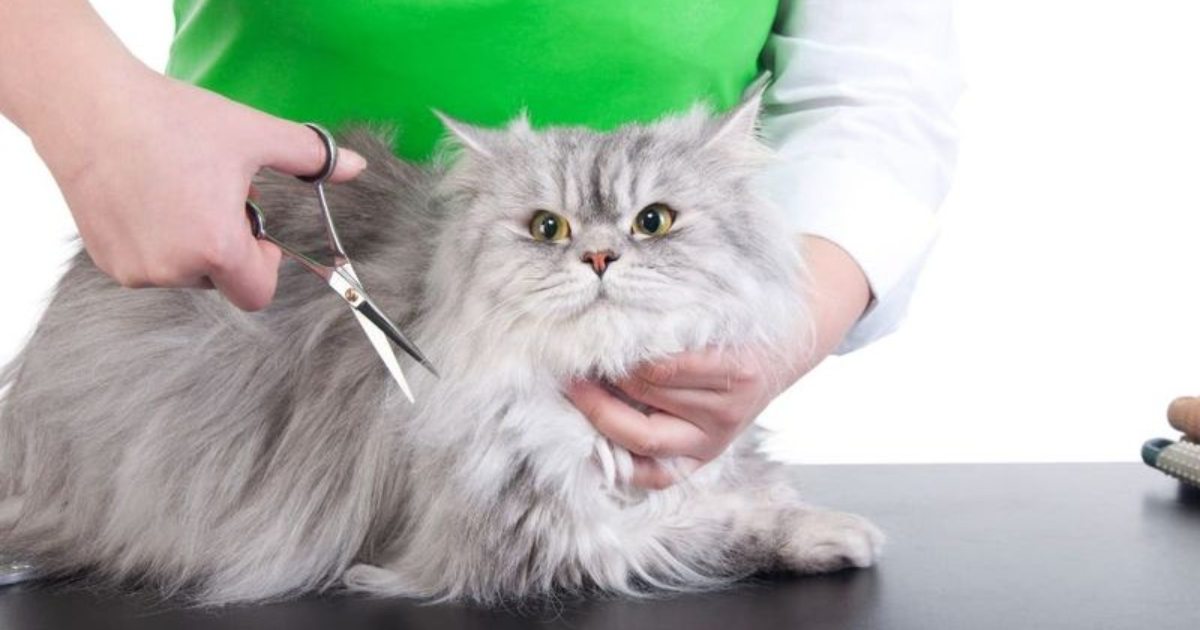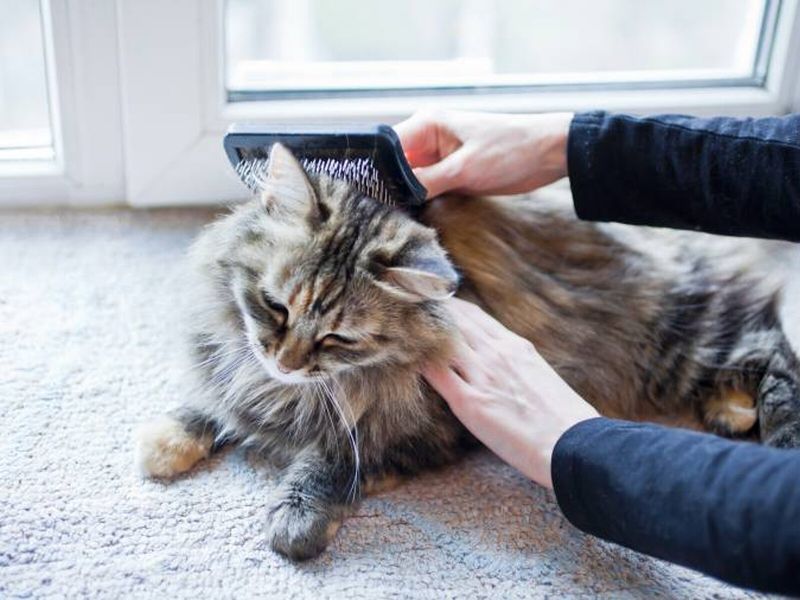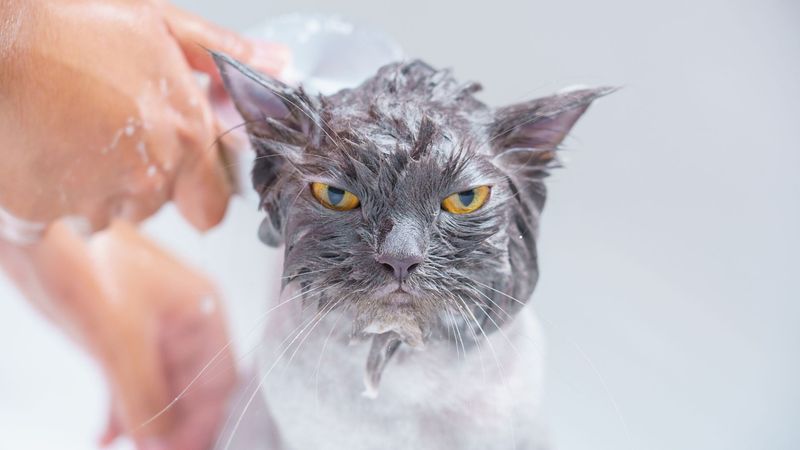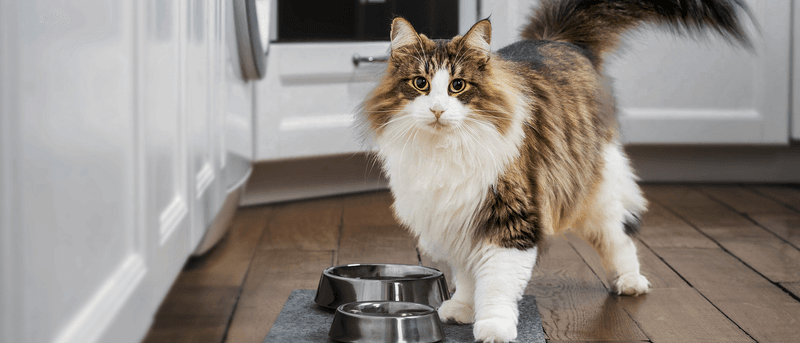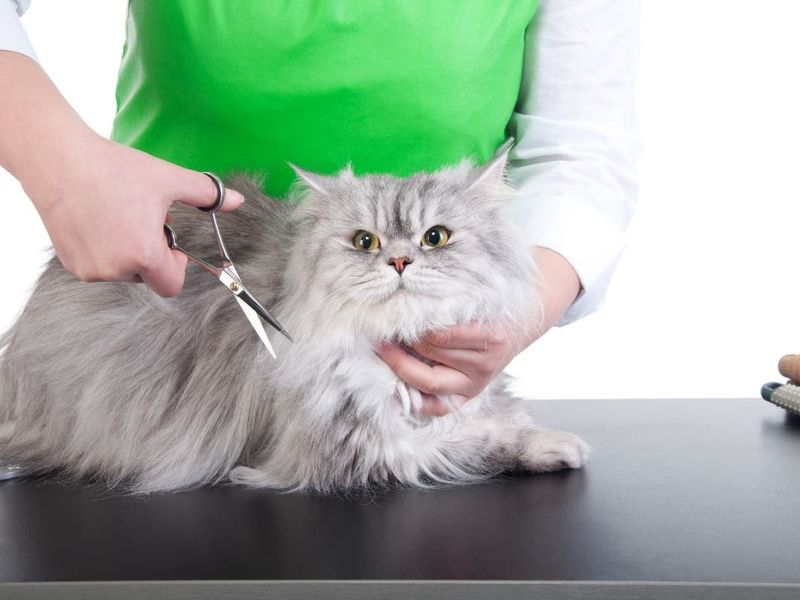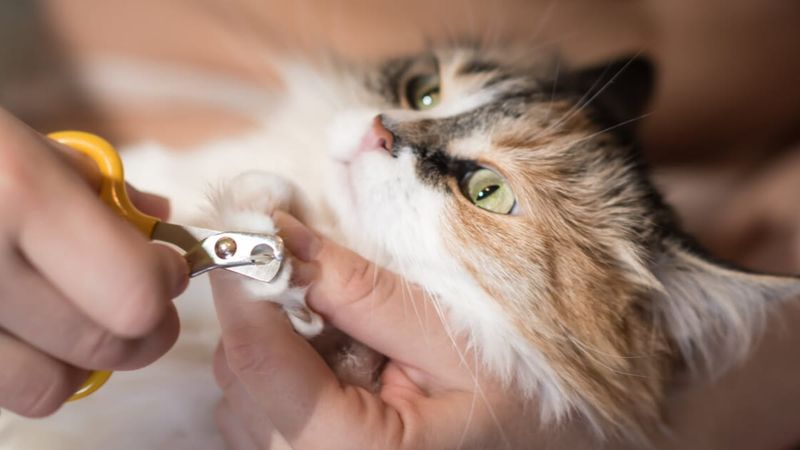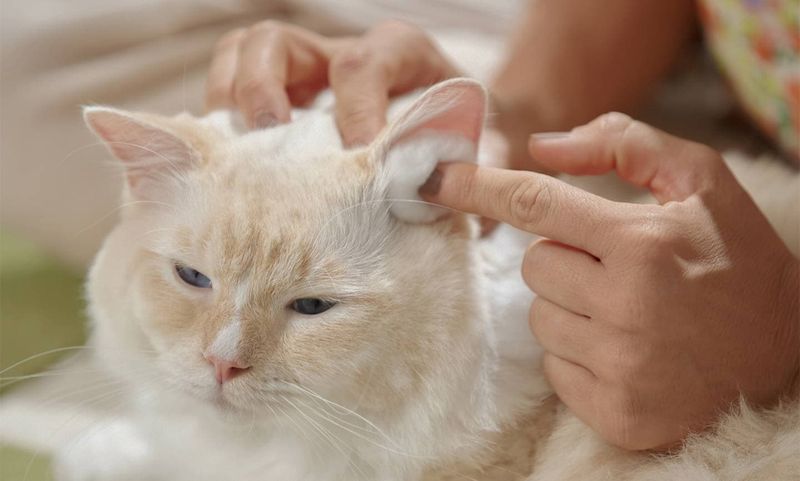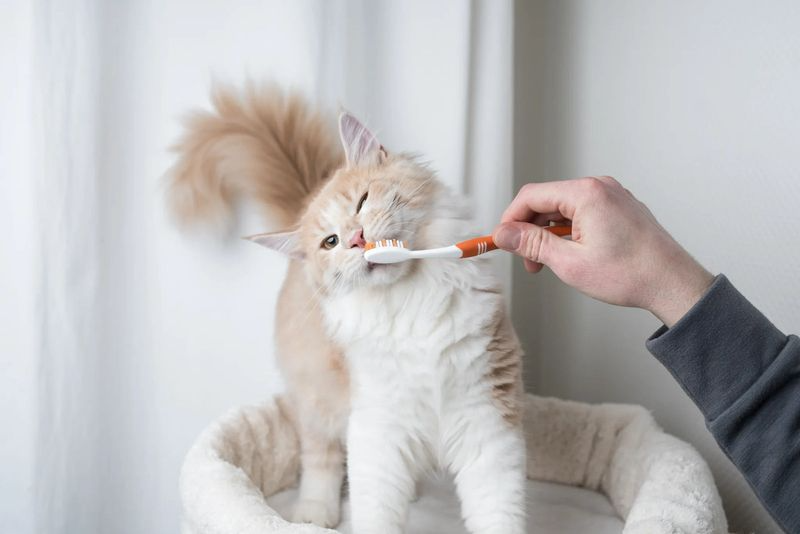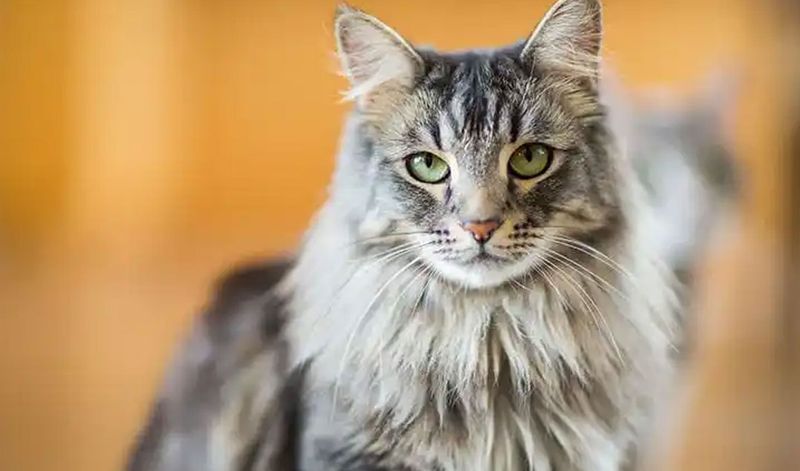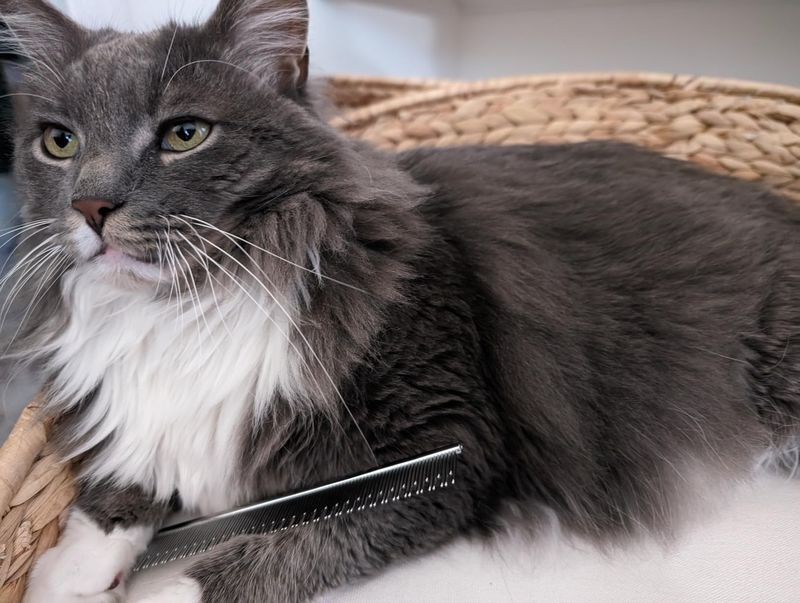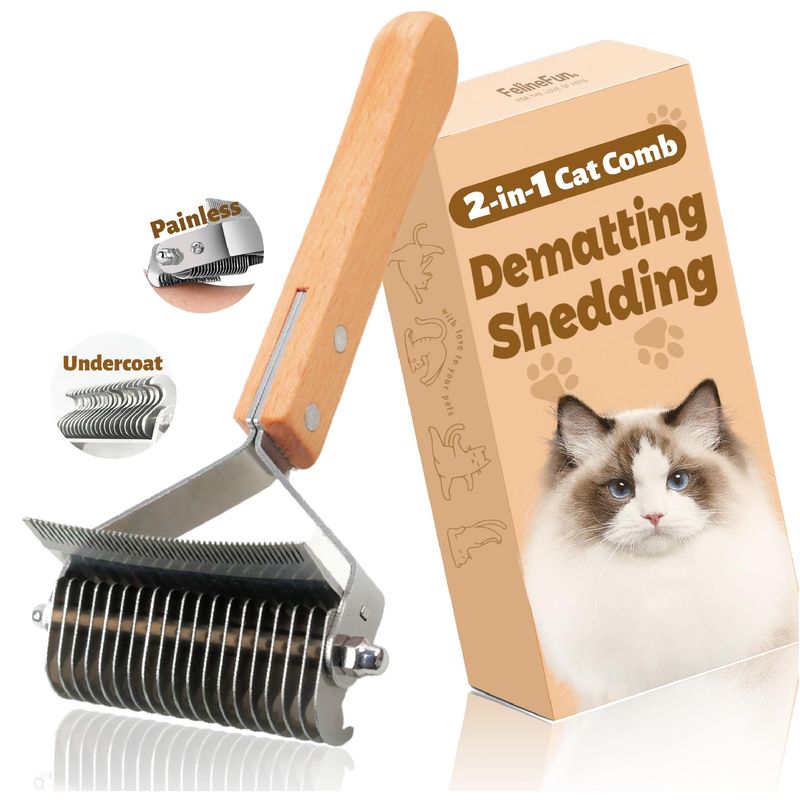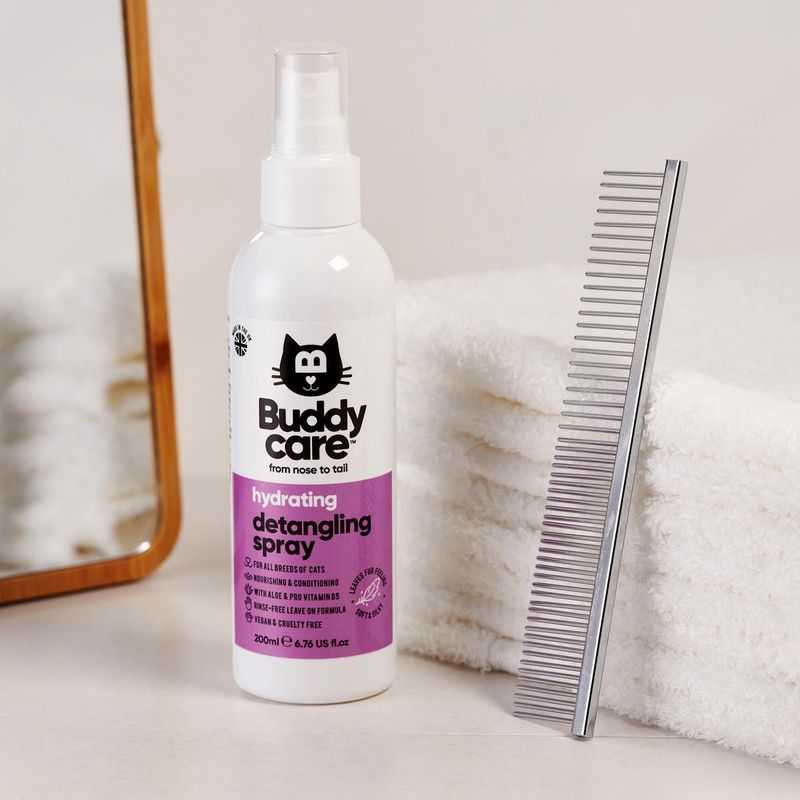📖 Table of Content:
Long-haired cats are undeniably majestic, with their luxurious coats adding an air of elegance to their every movement.
However, maintaining that silky, flowing fur requires more than just admiration—it demands regular grooming to keep your feline friend looking and feeling their best.
From managing tangles and mats to ensuring a healthy coat and skin, proper grooming is essential for their comfort and overall health.
Whether you’re a seasoned cat owner or new to the world of furry companions, these 11 practical grooming hacks for long-haired cats will make the whole process a stress-free and enjoyable experience for both you and your pet.
1. Regular Brushing
Regular brushing is crucial for long-haired cats to prevent mats and tangles. Aim to brush your cat at least three to four times a week with a slicker brush and a wide-toothed comb. Start from the head and move towards the tail, paying special attention to areas like the belly and under the armpits where mats tend to form.
Keep grooming sessions short and sweet to avoid stressing your cat. Offer treats and positive reinforcement to make the experience enjoyable. Consistent grooming not only keeps their coat healthy but also minimizes shedding around the home.
Regular brushing helps distribute natural oils, promoting a shiny and healthy coat. It’s a wonderful opportunity to bond with your cat, providing comfort and reducing stress. Remember, gentle handling is key to making brushing a pleasant routine for your furry friend.
2. Bathing Schedule
While cats groom themselves, long-haired breeds might need occasional baths to maintain cleanliness. Establish a bathing schedule based on your cat’s lifestyle. Indoor cats may require fewer baths compared to those that venture outdoors. Use cat-specific shampoo to avoid skin irritation.
Always ensure the water temperature is warm, not hot, to keep your cat comfortable. Rinse thoroughly to remove all shampoo residues, and dry them using a towel followed by a low-heat hairdryer, if tolerated.
Bathing can be an unfamiliar experience for cats, so introduce it gradually. Start by getting your cat accustomed to water and the bathing area without the stress of a full bath. This approach helps reduce anxiety and makes future baths a more pleasant experience for both of you.
3. Proper Nutrition
A balanced diet is vital for a healthy coat. Long-haired cats benefit from high-quality nutrition rich in omega-3 and omega-6 fatty acids. These nutrients support skin health and enhance the sheen of their luxurious fur.
Consult your veterinarian to choose the best diet for your cat’s specific needs. Adding supplements designed for skin and coat health can be beneficial. Ensure fresh water is always available to keep them hydrated, which also promotes a healthy coat.
Remember, a well-fed cat not only looks good but feels good too. Avoid overfeeding, as obesity can lead to skin conditions and make grooming more challenging. A proper diet contributes significantly to the overall well-being and appearance of your feline friend.
4. Trimming Mats Carefully
Despite regular brushing, long-haired cats can still develop mats. When you encounter a mat, it’s important to address it promptly to prevent discomfort or skin issues. Use a pair of blunt-tipped scissors or a mat splitter to gently cut through the mat.
Ensure you hold the fur close to the skin to avoid cutting or nicking it. If the mat is too close to the skin or too large, consult a professional groomer to avoid injury.
Regularly check common problem areas like behind the ears and under the armpits. By keeping up with mat control, you provide a more comfortable and pain-free experience for your cat. This routine, though meticulous, helps maintain your cat’s beautiful coat and overall skin health.
5. Nail Clipping
Long-haired cats often need regular nail clipping to prevent overgrowth and potential injury. Use a quality nail clipper designed for cats to ensure a clean cut. Trim nails every few weeks or as needed, depending on how quickly your cat’s nails grow.
Approach the task calmly, choosing a time when your cat is relaxed. Gently press the paw to extend the nail and trim just the tip, avoiding the quick, which is the pink part of the nail containing nerves and blood vessels.
If you’re unsure or nervous about clipping your cat’s nails, consult your veterinarian or a professional groomer for guidance. Regular nail maintenance not only prevents discomfort but also reduces the likelihood of scratches on furniture and skin.
6. Ear Cleaning
Ear cleaning is an essential part of grooming, especially for long-haired cats prone to ear infections. Check your cat’s ears weekly for dirt or wax build-up. Use a vet-recommended ear cleaner and cotton balls or gauze – avoid cotton swabs, as they can push debris further into the ear canal.
Gently lift the ear flap and apply the cleaner as instructed. Massage the base of the ear to help loosen debris, then wipe away the excess with a clean cotton ball.
Regular ear checks help you catch potential issues early, keeping your cat comfortable and avoiding more serious health concerns. If you notice redness, swelling, or a foul odor, consult your veterinarian promptly. Routine ear care is a simple yet effective way to support your cat’s overall health.
7. Dental Care
Dental care is often overlooked, yet it’s vital for your cat’s health. Long-haired cats, like all breeds, benefit from regular teeth brushing to prevent plaque buildup and dental issues. Use a toothbrush and toothpaste specifically designed for cats.
Introduce the toothbrush gradually, starting by letting your cat taste the toothpaste. Once they’re comfortable, gently brush their teeth in small circular motions, focusing on the gumline. Aim to brush at least three times a week.
Regular dental care helps prevent bad breath and more serious dental issues, contributing to your cat’s overall well-being. If brushing isn’t feasible, consider dental treats or veterinarian-approved alternatives. Ensuring your cat’s dental health is a crucial aspect of their grooming routine.
8. Eye Care
Long-haired cats can be prone to tear staining, especially breeds like Persians. Regular eye cleaning helps keep their eyes healthy and clear of debris. Use a soft, damp cloth or a vet-approved eye wipe to gently clean the area around the eyes.
Be cautious and gentle to avoid irritating the sensitive eye area. Clean from the corner of the eye outward, using a new section of the cloth for each eye. Regular cleaning prevents build-up, reducing the risk of infection or irritation.
If you notice excessive tearing or discharge, consult your veterinarian to rule out any underlying issues. Keeping your cat’s eyes clear is not only hygienic but also enhances their appearance, ensuring they always look their best. Regular eye care is a small yet impactful part of grooming your long-haired cat.
9. Use a High-Quality Comb
A high-quality comb is your best friend when it comes to maintaining your cat’s luscious locks. Choose a metal comb with both wide and narrow teeth to tackle different fur textures. Start by slowly combing through tangles with the wide teeth to prevent snagging.
Once the tangles are removed, switch to the narrow teeth to smooth out the fur and remove any remaining debris.
Regular combing not only keeps your cat looking regal but also strengthens your bond with them. It’s a relaxing ritual that both you and your cat will look forward to.
10. Invest in a Deshedding Tool
To manage shedding, a deshedding tool is essential. These tools are designed to reach the undercoat without harming the topcoat, removing loose fur efficiently.
Regular use prevents hairballs and reduces the amount of fur left on furniture. For long-haired breeds like the Maine Coon, this tool is a game changer.
Sweep the tool gently through their fur, focusing on areas prone to matting. The satisfying collection of fur will leave your cat’s coat smoother and cleaner. It turns grooming into a zen-like experience for both of you.
11. Keep Their Coat Moisturized
Moisturizing your cat’s coat is crucial to prevent dryness and breakage. Opt for a cat-safe conditioning spray to keep the fur soft and shiny.
Regular application helps in maintaining the natural oils of the coat, enhancing its glow. Gently spray and run your fingers through the fur to distribute it evenly.
This simple act not only improves fur quality but also provides a soothing moment of care. It’s a great way to show your feline some extra love, leaving them with a radiant, healthy coat.
